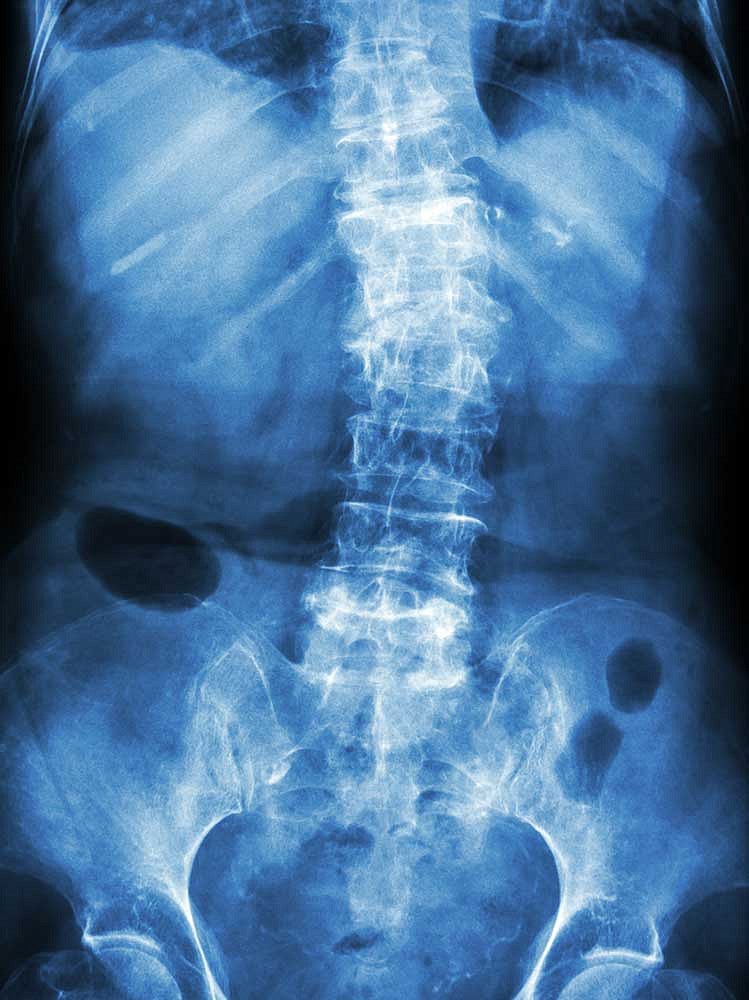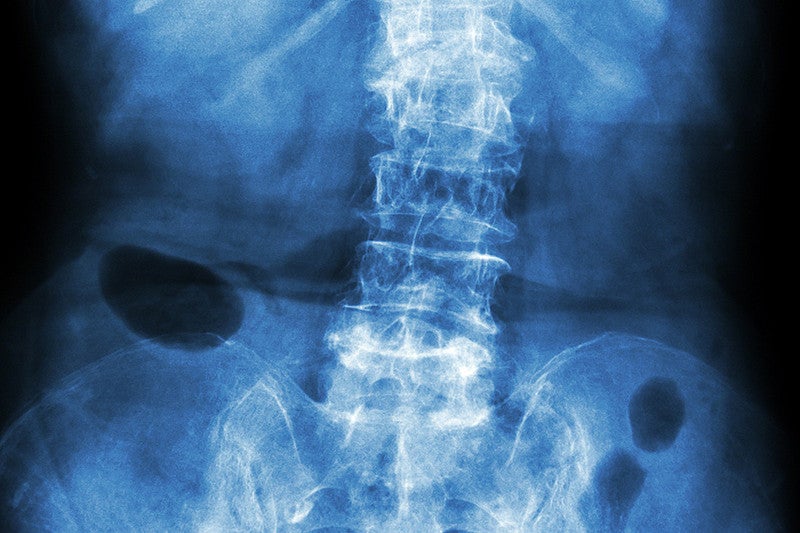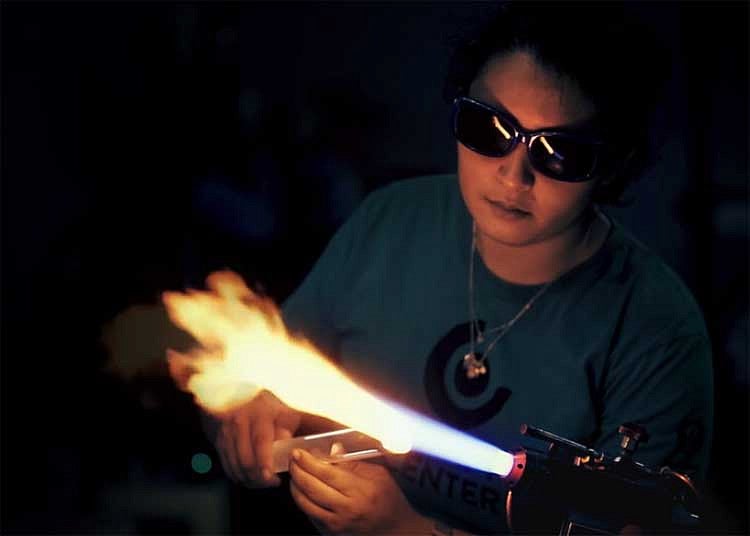Robert Guldberg to take the helm of the Phil and Penny Knight Campus for Accelerating Scientific Impact next fall
A mechanical engineer well-versed in medical research and entrepreneurship has been chosen to lead the Phil and Penny Knight Campus for Accelerating Scientific Impact at the University of Oregon.
Robert E. Guldberg, widely known in the field of regenerative medicine, will become executive director of the Knight Campus next September.

The Knight Campus, announced last fall, is a $1 billion effort to rethink research, science education and innovation. It is made possible by a $500 million lead gift from Penny and Phil Knight, who earned a business degree at the UO in 1959, and supported with $50 million in state bonds.
Guldberg has been at the Georgia Institute of Technology, also known as Georgia Tech, in Atlanta since 1996. He has headed the Parker H. Petit Institute for Bioengineering and Bioscience since 2009.
The Knight Campus goal to quickly turn discoveries into usable societal applications, he said, fits well into how he approaches science. “As I’ve advanced in my career, I have gravitated toward developing technologies that actually make their way into patients,” Guldberg said.
“There are a lot of institutions in the country that are innovating very, very well, but they are not getting their innovations out the door effectively,” he said. “It doesn’t really make sense to start things completely from scratch, but rather to build on areas of strength that can be turned into areas of national pre-eminence and then translated into societal impact.”
Groundbreaking on the $225 million first phase of the Knight Campus is scheduled for February. The 160,000-square-foot building will open in early 2020.
Over the next decade, the Knight Campus will house more than 30 new principal researchers and their teams and will support an estimated 750 new jobs, representing an estimated $80 million in annual statewide economic gains.
“While Bob holds impeccable academic credentials, it is his ability to effect change and create meaningful impact that is really impressive,” said UO President Michael H. Schill. “Bob describes himself as an engineer who speaks many different ‘languages’ – engineering, biology, entrepreneurship and the like. This fluency is just what we need for the Knight Campus.”
Schill also praised Patrick Phillips, who is serving as acting executive director, for his leadership.
“I am immensely grateful to Patrick,” he said. “Under Patrick’s extraordinary and selfless leadership, the Knight Campus has been transformed from an exciting concept to concrete reality. Patrick is a phenomenal leader who has created a stellar foundation for Bob and the Knight Campus team to build upon.”
“Bob Guldberg is a high-energy and visionary proven leader, team builder and consensus builder who is interested in results and good partnerships. With his new position at the University of Oregon, I’m sure that Bob will be interested in partnering with OHSU in such areas as diagnostics, cell-mediated therapies and neurosciences, especially in work related to nerve and spinal cord injuries and regenerative medicine.”
—Dr. Kenton Gregory, director, Center for Regenerative Medicine, Oregon Health & Science University
Faculty members Jim Hutchison, a chemist and associate vice president for research, and biologist Karen Guillemin – both members of the Knight Campus advisory board – said they look forward to Guldberg’s arrival.
“Bob will bring us a wealth of experience not just in research but in the translation of science into society,” Hutchison said. “As an engineer, he will bring a new way of thinking about how we do research and translate it.”
Guldberg’s presence, Guillemin said, will speed up planning and faculty recruitment.
“Bob will bring a lot of new expertise to campus,” she said. “He’s trained as an engineer but also, throughout his career, has been interested in molecular and cellular mechanisms, and that’s something that should really enrich the life sciences here. We should benefit a lot from his energy and approaches.”
Gone are the days, Guldberg said, when researchers can work alone within a single discipline.
“Science is a team sport. It’s also a people business,” he said. “The challenges we face now in the world, in society and medicine are so complex that the old way is not possible anymore. If you take cancer, for example, it’s unlikely that just a biologist or just a clinician or just an engineer is going to solve it. We need to create teams to work together, and it turns out that funding agencies and companies that support research have figured that out, too.”
He taps his engineering knowledge in his own research, where he seeks to understand how body mechanics influence the healing process and how such information can be harnessed to restore normal functioning. His work in regenerative medicine propelled him into national prominence and a collaboration with medical scientists in the Center for Regenerative Medicine at the Oregon Health & Science University in Portland.
“We do a lot of research with the military involving traumatic limb injuries among soldiers and also severe injuries in civilians,” Guldberg said. “We’re trying to understand from a biological standpoint whether we can predict patients who are going to respond well, or not, to treatment.”
“I have known Bob for many years as a colleague in the stem cell field, as a collaborator in an annual regenerative medicine conference we co-host and in my role as a member of the external advisory board at the Petit Center at Georgia Tech. He is a world-class scientist and has proved that he can lead a multidisciplinary scientific and teaching center. He leads by inclusion and by example while giving others room to grow, thrive and be independent.”
—Brock Reeve, executive director, Harvard University’s Stem Cell Institute
Guldberg and center director Dr. Kenton Gregory had leading roles in the establishment, in 2008, of the Armed Forces Institute for Regenerative Medicine, whose mission is to restore the lives of soldiers with battlefield injuries.
“We have helped manage this effort of about 30 leading universities for the past nine years,” Gregory said.
In Guldberg’s research on muscle and bone diseases, he is seeking to better understand basic molecular mechanisms and develop therapies for skeletal issues such as osteoporosis and osteoarthritis and osteochondritis dissecans. The latter causes portions of joints to break apart in young children, leading to osteoarthritis early in life and potentially total joint replacement as they get older.
“We are studying whether stem cell or other therapies that can help reverse this condition before it gets too severe,” he said. “We are trying to understand how this disease starts by studying patient-specific diseases in a petri dish.”
When his daughter, at age 14, complained of back pain, Robert Guldberg’s research into musculoskeletal issues became personal as the family dealt with her diagnosis and treatment.
His daughter, then an emerging competitive tennis player, was diagnosed with spondylolisthesis, a condition similar to scoliosis, in which one vertebra slides over another, usually in the lower back. She underwent spinal fusion surgery to repair the condition. Nine months later, a second surgery followed.
“That experience made me think about better ways to fuse the spine,” Guldberg said. “Along with a collaborator in materials science, we set out to design a spine-fusion cage. Its scaffolding had a porosity to the surface that encouraged much faster bone-in growth for fixation.”
The research-and-development process led to a dozen academic papers. Soon after the cage was approved by the Food and Drug Administration and entered the market, it was acquired by a major medical device company.
Guldberg’s daughter today is a biochemistry major at Georgia Tech. His son is an industrial systems engineer and collegiate baseball player for the Georgia Tech Yellow Jackets.
Guldberg’s leadership, research and student mentoring will be missed at Georgia Tech, said Robert Nerem, who recruited Guldberg as he was putting together the university’s Institute for Bioengineering and Bioscience.
Early on, Nerem said, Guldberg successfully pushed for a $2 million lab animal facility to be added into the construction of the institute’s new building. Nerem also put Guldberg, as an assistant professor, in charge of the institute’s orthopedics unit, which was part of a National Science Foundation grant. Guldberg subsequently connected the institute with Emory University’s School of Medicine and Children’s Health Care of Atlanta.
Guldberg’s collaborative work also includes a long-running connection with Harvard University’s Stem Cell Institute on the business of translating regenerative medicine technologies.
“When Bob Guldberg took over as director when I retired, he took the leadership that I had provided and took it to a whole new level. The institute is very different today because of his leadership. When I look at what he’s done for Georgia Tech, I think he is the ideal person to provide the leadership to the Knight Campus.”
—Robert Nerem, founding executive director, Parker H. Petit Institute for Bioengineering and Bioscience, Georgia Tech
Guldberg grew up in southeastern Michigan. His father was a Ford Motor Co. engineer and executive, his mother a nurse. He headed to the University of Michigan with an interest in bioengineering and a dream of playing basketball. Instead he chose mechanical engineering. His research life began in his sophomore year.
“I went knocking on the doors of different laboratories to see if somebody would take in a poor undergrad and give him some research experience,” Guldberg said. “I ended up landing in the orthopedic bioengineering lab in the surgery department.”
The lab’s director, Steve Goldstein, placed him with a clinician studying dislocated shoulders.
“My assignment was to help figure out how important the rotator cuff muscles and the capsule around it were in shoulders that were being dislocated,” Guldberg said. “In engineering terms, this involved the static and dynamic stabilizers. I had to design a device that would hold a human shoulder, which wasn’t too hard for a mechanical engineer.”
That work led to his first published paper and hooked him on science.
“I met Bob when he was an undergrad and was looking to go to graduate school. I immediately liked his confidence and his passion. Over the next few years as he completed his doctoral studies he demonstrated creativity, technical excellence and great perception. When I asked him to mentor graduate students, he provided me with a glimpse into his developing leadership skills. And as an external advisor to the Petit Institute, I’ve had the opportunity to watch Bob grow into a phenomenally successful investigator, leader and now director. He has that unique ability to see opportunity, capitalize on it and engage others in its success.”
—Steven Goldstein, professor emeritus, University of Michigan, and Guldberg’s first research mentor
Some of his federally supported research will follow him to the UO. He also will bring his management style to the Knight Campus.
“I make quick decisions when necessary,” he said. “I am not afraid to take risks and push ahead, but, given time, I like to listen to others first and build consensus and develop strategies around what would be the greater good. I think that fits well with what the Knight Campus has in mind. I am interested in having staff members who like each other, work well together and are engaged in the cutting-edge research our students and faculty are doing.”
Discover the Knight Campus






